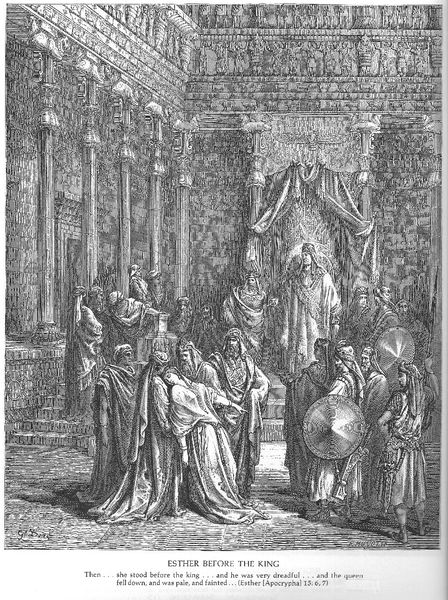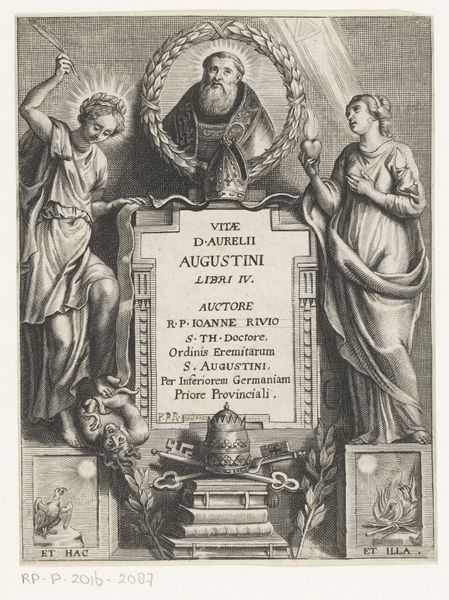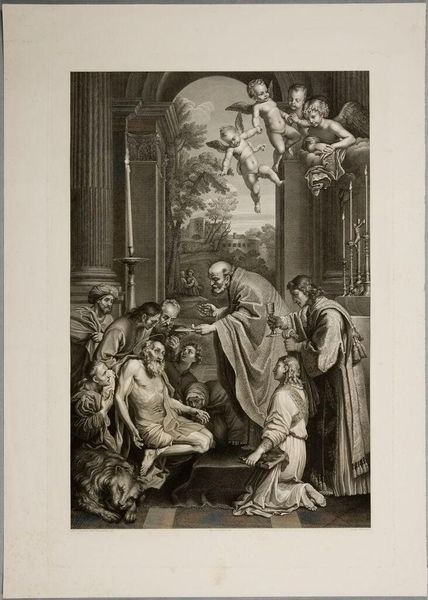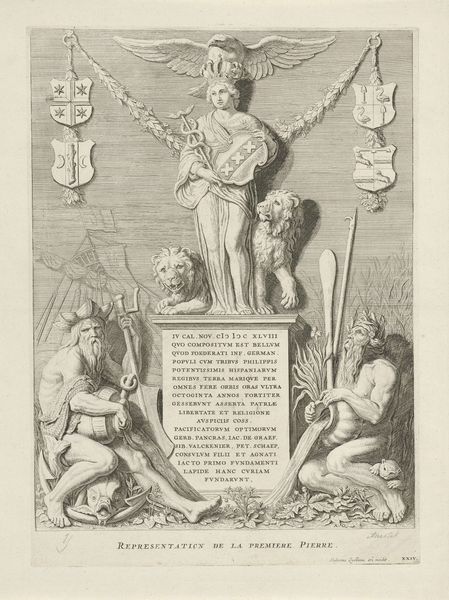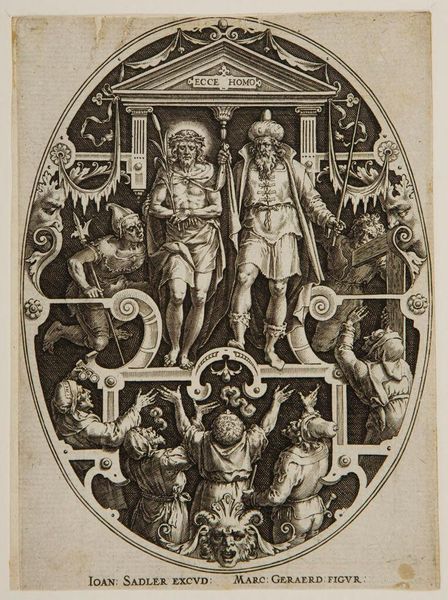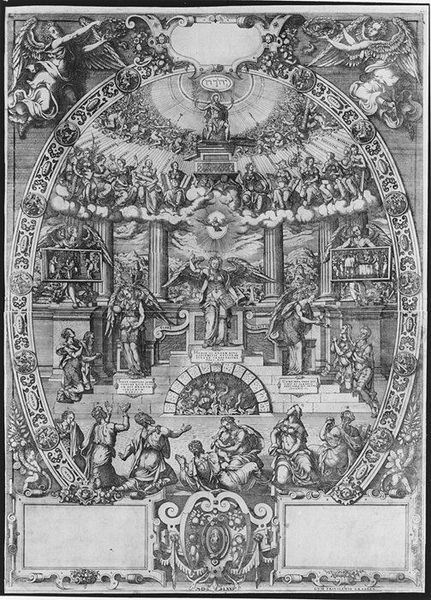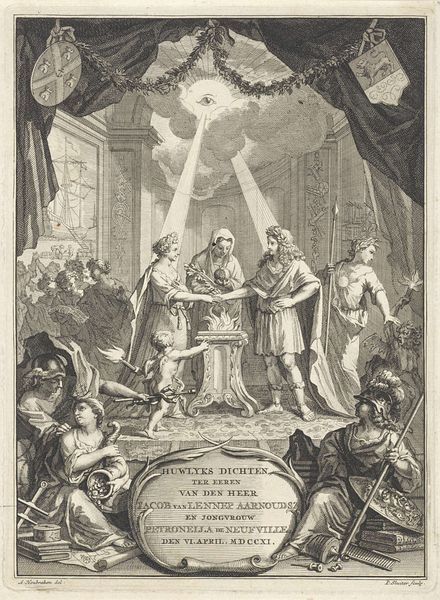
drawing, print, etching, engraving
#
portrait
#
drawing
#
baroque
#
pen drawing
# print
#
etching
#
line
#
history-painting
#
academic-art
#
engraving
Dimensions: plate: 13 1/8 x 9 in. (33.3 x 22.8 cm) sheet: 16 1/16 x 10 in. (40.8 x 25.4 cm)
Copyright: Public Domain
Editor: This etching, "Tomb and Medals of Pope Sixtus V," was created in 1630 by Matthaeus Greuter, and it's currently at the Metropolitan Museum of Art. I’m struck by its formal and almost theatrical presentation; the Pope is staged with elaborate adornments, and his legacy seems to be what's most highlighted here. What jumps out at you when you look at it? Curator: What jumps? Well, the audacity, maybe! It's so relentlessly ornate. Baroque excess cranked to eleven! I see this explosion of imagery not so much as a historical document, but as a carefully constructed *fiction*. Greuter is selling us a story, one sculpted not just in ink, but in papal ambition and Counter-Reformation fervor. Don't you think it’s trying to convince you of something, almost desperately? Editor: A story how? I see the tomb, and the medals, so it seems factual. Curator: Think of the composition! It’s not a passive recording, but an active construction. It’s visual propaganda! Consider the light – strategically placed to highlight certain features and cast others in shadow, creating drama and reinforcing the desired message. And the text itself, imposing and centrally located! Do you find its arrangement of elements manipulative? Or celebratory? Editor: Manipulative is a strong word… I see it as commemorative and definitely stylized. Like this isn't just *a* tomb, it's *the* tomb, like the *definitive* one! Curator: Exactly! And definitive according to whom? That's the delicious question art history constantly asks, isn't it? Who benefits from this particular narrative? And how did they get away with telling it? Or better, what made that telling convincing then, or now? Editor: That makes so much sense! I didn’t even think of the angle. Now I see more of its intent. Curator: And seeing is, as they say, believing!
Comments
No comments
Be the first to comment and join the conversation on the ultimate creative platform.





